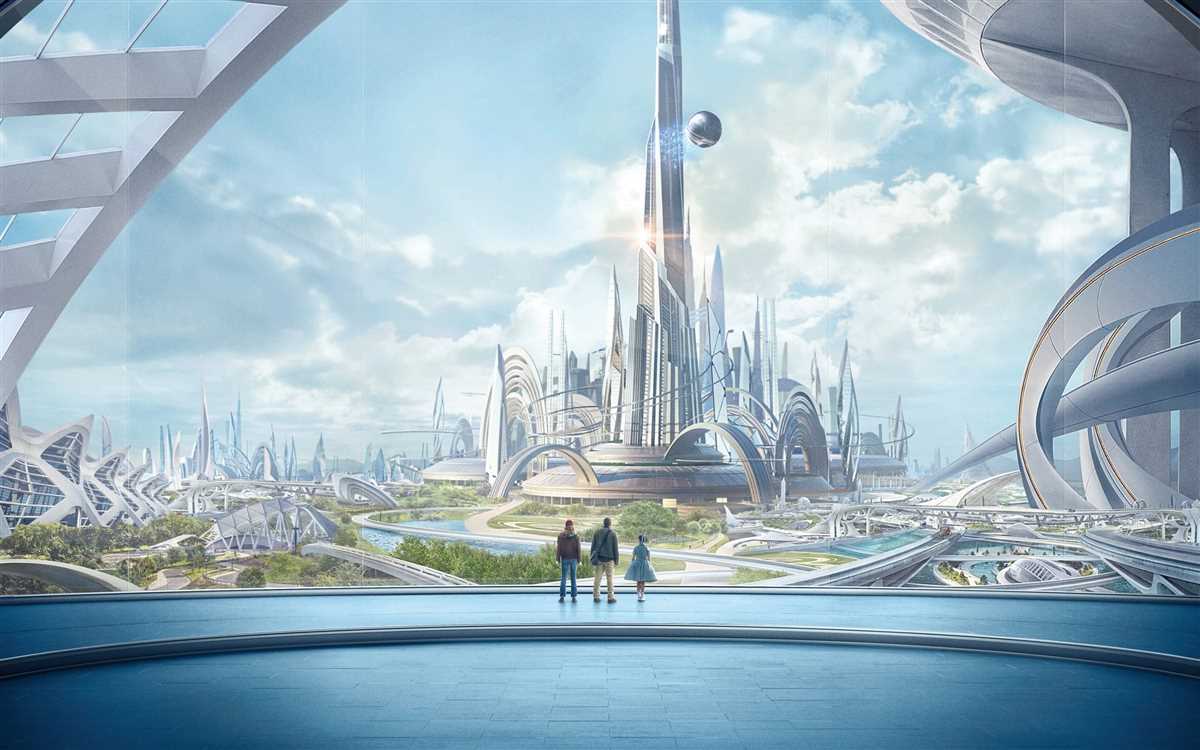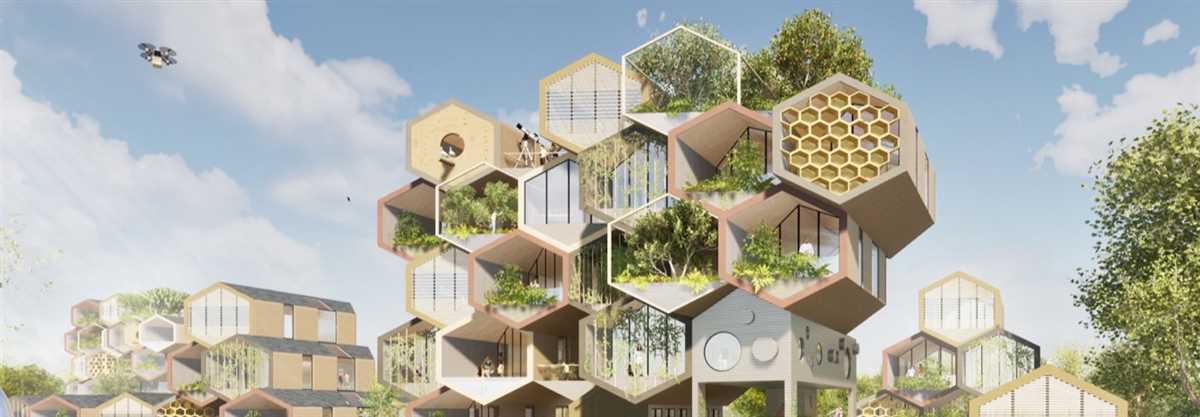
Earthships are innovative, self-sustaining homes that are gaining popularity as the future of sustainable living. These eco-friendly dwellings are designed to have a minimal impact on the environment while providing a comfortable and modern living space. Earthships are built using natural and recycled materials and utilize renewable resources, making them a great option for those looking to live off the grid or reduce their carbon footprint.
One of the key features of an Earthship is its ability to produce its own energy. These homes are designed to capture and store solar energy, reducing or even eliminating the need for traditional sources of power. This makes Earthships not only environmentally friendly but also cost-effective in the long run. Additionally, Earthships are designed to be self-sufficient in terms of water supply and wastewater treatment. They utilize rainwater collection systems and greywater filtration systems to provide clean and sustainable water sources.
Another unique aspect of Earthships is their ability to regulate temperature naturally. These homes are built with thermal mass, which absorbs and stores heat from the sun during the day and releases it at night, keeping the interior temperature stable throughout the year. This means that Earthships can maintain a comfortable living environment without the need for conventional heating or cooling systems, further reducing their environmental impact.
In conclusion, Earthships represent a promising future for sustainable living. With their focus on renewable energy, water conservation, and natural temperature regulation, these homes provide a blueprint for a more environmentally friendly way of living. As the world becomes more conscious of the need to reduce our carbon footprint, Earthships offer a practical solution for those looking to make a positive impact on the planet while still enjoying a modern and comfortable lifestyle.
What are Earthships and why are they important?
Earthships are a sustainable and self-sufficient type of housing that are designed to have a minimal impact on the environment. They are built using recycled materials, such as used tires, cans, and bottles, which are then packed with earth to create sturdy walls. These eco-friendly homes are designed to be completely off-grid, utilizing renewable energy sources like solar power and wind turbines, and collecting rainwater for everyday use.
One of the most important aspects of Earthships is their ability to regulate temperature naturally. They are designed to harness the sun’s heat during the day and release it at night, providing a comfortable living environment without the need for traditional heating and cooling systems. The thick walls and thermal mass of the Earthship structure help to keep the interior temperature stable, reducing the need for artificial heating or cooling.
Moreover, Earthships are important because they promote sustainable living and reduce our carbon footprint. By utilizing recycled materials and renewable energy sources, these homes help to minimize resource consumption and decrease waste generation. They also provide an excellent solution for remote or off-grid living, allowing people to live in harmony with nature while still enjoying modern comforts.
In conclusion, Earthships are a revolutionary and environmentally-friendly approach to housing. They offer a sustainable alternative to traditional homes, utilizing recycled materials, renewable energy, and natural temperature regulation. By embracing Earthships, we can reduce our impact on the environment and create a more sustainable future for generations to come.
Benefits of living in an Earthship

Living in an Earthship offers numerous benefits, making it a sustainable and environmentally-friendly housing option for the future. Earthships utilize innovative and efficient design principles to provide a comfortable and self-sufficient living space. Here are some key benefits of living in an Earthship:
- Energy efficiency: Earthships are designed to take advantage of passive solar heating and cooling, reducing the need for external energy sources. By utilizing natural materials, thermal mass, and renewable energy systems, Earthships can maintain comfortable temperatures all year round.
- Sustainable construction: Earthships are built using recycled and locally sourced materials, such as old tires, glass bottles, and aluminum cans. This not only reduces waste but also minimizes the environmental impact of traditional construction methods. Additionally, the use of renewable energy systems, such as solar panels and wind turbines, further enhances the sustainability of Earthships.
- Water conservation: Earthships employ innovative water harvesting and treatment systems to minimize water consumption. Rainwater is collected and stored in cisterns, which can then be used for various purposes, such as showering, washing dishes, and watering plants. Greywater from sinks and showers is filtered and reused, further reducing water waste.
- Food production: Earthships often incorporate indoor and outdoor gardening spaces, such as greenhouse areas and permaculture gardens. This allows residents to grow their own food, reducing reliance on external food sources and promoting self-sufficiency. The use of organic and sustainable farming practices also ensures that the food produced is healthy and environmentally friendly.
- Financial savings: Due to their energy-efficient design and reliance on renewable energy systems, Earthships can significantly reduce energy and utility bills. The ability to grow food on-site also helps save money on groceries. Over time, these savings can add up, making living in an Earthship a cost-effective housing option in the long run.
Living in an Earthship offers not only a sustainable and environmentally-friendly lifestyle but also numerous benefits in terms of energy savings, self-sufficiency, and financial savings. As the future of home design, Earthships provide a blueprint for sustainable living that can contribute to a greener and more sustainable future.
How do Earthships achieve self-sustainability?

Earthships are innovative and sustainable homes that aim to operate independently from the grid, relying on renewable resources to meet their energy, water, and food needs. They achieve self-sustainability through a combination of passive solar design, water harvesting and treatment systems, as well as indoor food production.
Passive solar design: Earthships are built using natural and recycled materials, such as tires, glass bottles, and reclaimed wood. The design incorporates large south-facing windows to maximize solar gain and minimize the need for artificial heating. The thermal mass of the tire walls and packed earth floors helps regulate indoor temperatures, keeping the home warm in winter and cool in summer.
Water harvesting and treatment systems: Earthships collect rainwater from the roof and direct it through a series of filters and storage tanks for domestic use. Greywater from sinks and showers is treated on-site and used to irrigate plants in indoor or outdoor gardens. To conserve water, Earthships also utilize composting toilets, which turn human waste into nutrient-rich compost.
Indoor food production: Earthships feature greenhouses or indoor gardens where residents can grow their own food. These spaces take advantage of the home’s thermal mass and passive solar design to create a microclimate suitable for year-round plant growth. By having access to fresh produce within the home, Earthship residents reduce their reliance on external food sources.
Furthermore, Earthships incorporate renewable energy generation systems, such as solar panels and wind turbines, to power the home’s electrical needs. Excess energy can be stored in batteries for use during cloudy or low-wind periods. Some Earthships also incorporate biogas digesters, which convert organic waste into methane gas for cooking and heating.
In summary, Earthships achieve self-sustainability through passive solar design, water harvesting and treatment systems, indoor food production, and renewable energy generation. These integrated systems work together to create a self-sufficient and environmentally-friendly home that reduces reliance on traditional infrastructure.
Can Earthships be built anywhere in the world?
Earthships, with their sustainable and self-sufficient design, have gained popularity as an eco-friendly housing solution. One might wonder, can Earthships be built anywhere in the world? The answer is yes, but with some considerations.
Climate: Earthships are designed to be energy-efficient and able to regulate temperature naturally. However, they are most suitable for areas with moderate climates. The thermal mass of the walls and the greenhouse effect inside the Earthship work best in regions with a relatively consistent temperature throughout the year.
Site-specific considerations: The location and topography of the site are important factors to consider when building an Earthship. The ideal site should have good solar exposure for passive heating and energy generation. It should also have access to water sources, preferably a well or a reliable water catchment system. Additionally, the soil composition should be suitable for building and landscaping purposes.
While Earthships can be built anywhere, adapting the design to the specific climatic and geographical conditions of a region is essential for optimal performance. Whether it’s in the desert, mountains, or coastal areas, the principles of Earthship design can be customized to utilize the available resources and maximize sustainability.
Overall, Earthships offer an innovative and eco-friendly housing solution that can be implemented in various locations around the world. With careful consideration of the climate and site-specific factors, Earthships can provide comfortable and sustainable homes for people in different parts of the globe.
The Cost-Effective Nature of Earthships

Earthships are not only eco-friendly and sustainable, but they are also cost-effective. They utilize natural and recycled materials, which can significantly reduce the construction cost compared to conventional homes. Additionally, Earthships are designed to be self-sufficient in terms of energy, water, and waste management, which can save homeowners a significant amount of money in the long run.
One of the main cost-saving factors of Earthships is their use of passive solar design. The thermal mass of the earth-rammed tires and the greenhouse effect created by the south-facing glass windows help regulate the indoor temperature, reducing the need for heating and cooling systems. This can result in substantial energy savings on heating and cooling bills.
Moreover, Earthships incorporate renewable energy systems such as solar panels and wind turbines to generate electricity. These systems can provide homeowners with a reliable and independent source of energy, eliminating or significantly reducing monthly electricity bills. The use of rainwater harvesting and greywater recycling systems also helps in reducing water bills.
- Earthships are highly durable and require minimal maintenance, which further reduces the cost of homeownership.
- The use of recycled and salvaged materials, such as tires and bottles, can significantly lower the construction cost.
- Earthships are designed to be adaptable to different climates, reducing the need for additional expenses like insulation and HVAC systems.
- By utilizing natural and renewable resources, Earthships reduce the reliance on conventional utilities, thereby saving money in the long term.
In conclusion, Earthships offer a cost-effective solution for modern housing. Their sustainable design and reliance on natural resources not only benefit the environment but also provide homeowners with long-term financial savings. With their low construction and maintenance costs, energy and water efficiency, and durability, Earthships are a promising option for the future of affordable and sustainable housing.